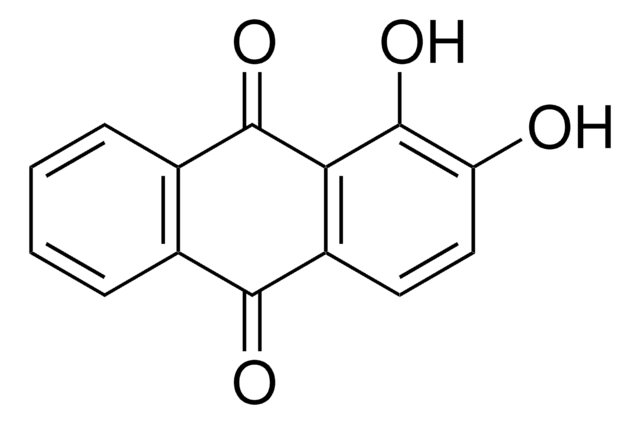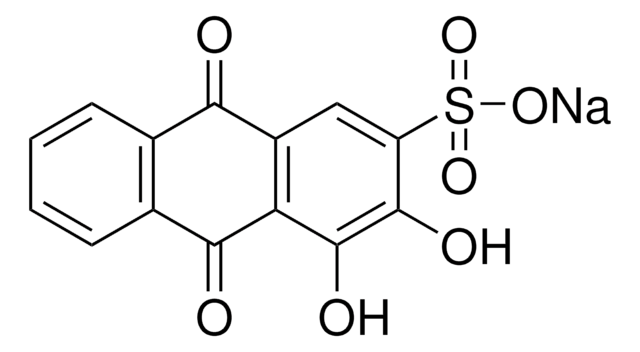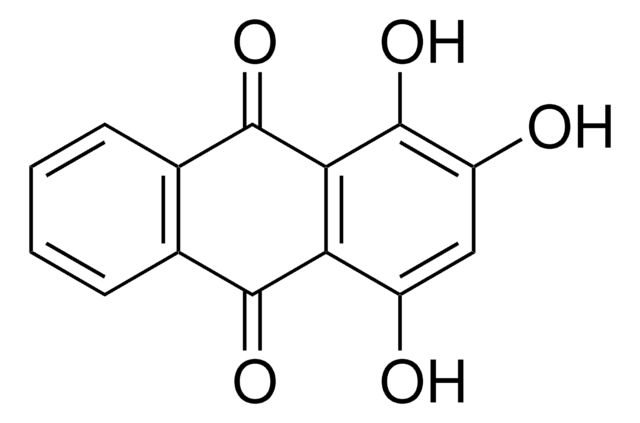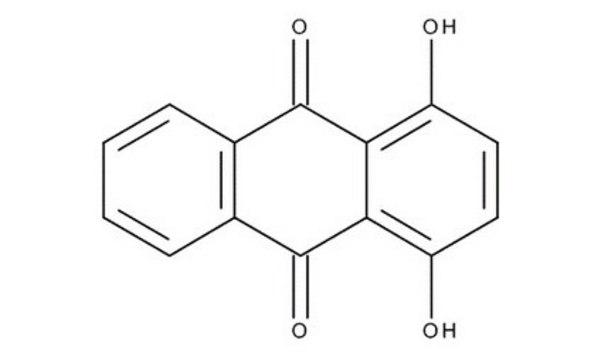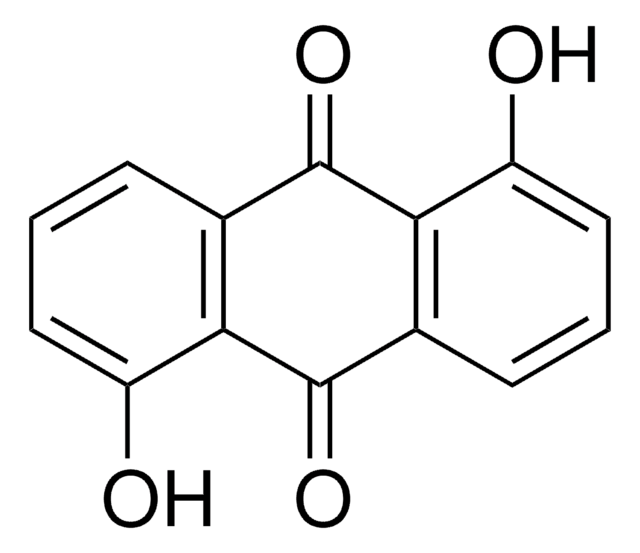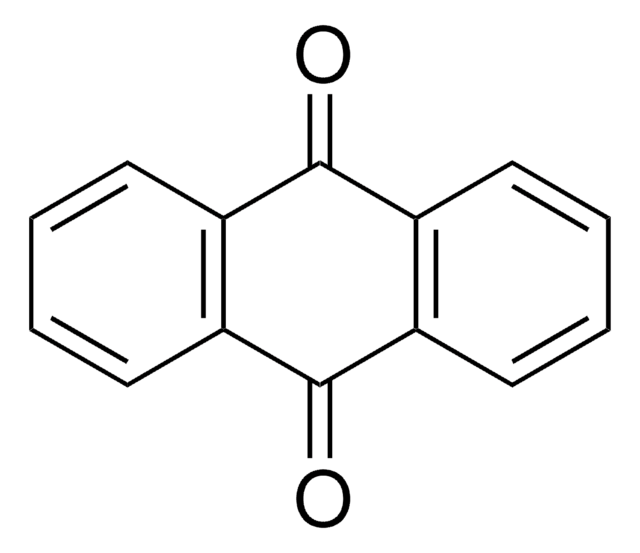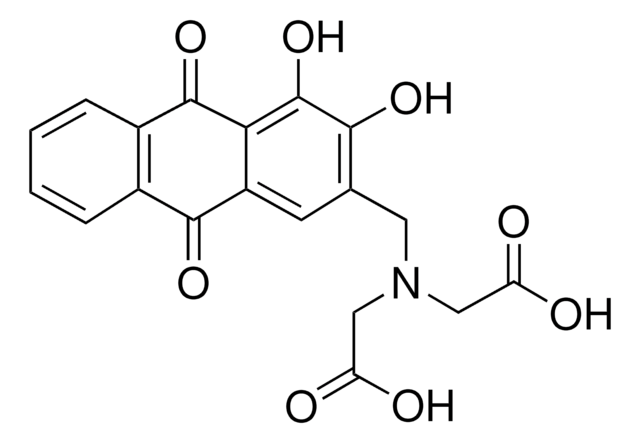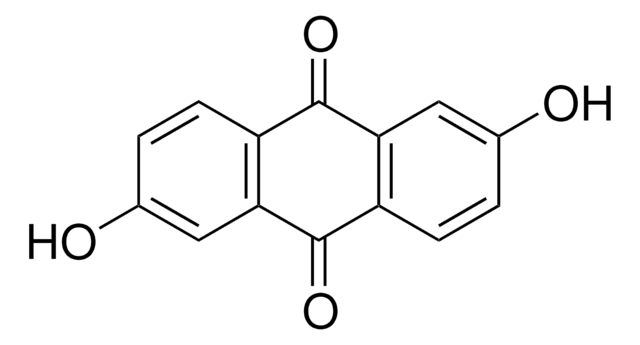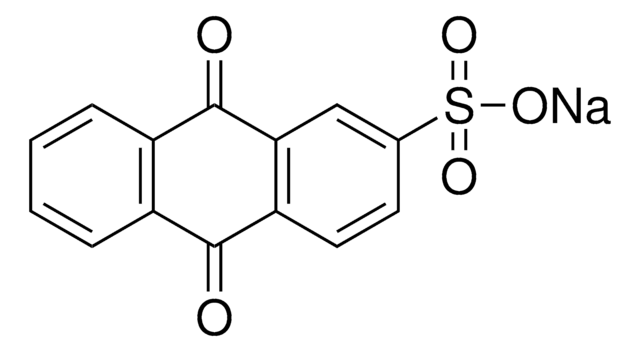229148
Purpurin
Dye content 90 %
Synonym(s):
1,2,4-Trihydroxyanthraquinone, Hydroxylizaric acid, Verantin
About This Item
Recommended Products
Assay
>70-85% (HPLC)
form
powder
composition
Dye content, 90%
impurities
1-3% DMF
mp
253-256 °C (lit.)
solubility
NH4OH: 1 mg/mL, clear to turbid
λmax
515 nm
521 nm (2nd)
application(s)
diagnostic assay manufacturing
hematology
histology
storage temp.
room temp
SMILES string
Oc1cc(O)c2C(=O)c3ccccc3C(=O)c2c1O
InChI
1S/C14H8O5/c15-8-5-9(16)14(19)11-10(8)12(17)6-3-1-2-4-7(6)13(11)18/h1-5,15-16,19H
InChI key
BBNQQADTFFCFGB-UHFFFAOYSA-N
Looking for similar products? Visit Product Comparison Guide
General description
Application
Signal Word
Warning
Hazard Statements
Precautionary Statements
Hazard Classifications
Eye Irrit. 2 - Skin Irrit. 2 - STOT SE 3
Target Organs
Respiratory system
Storage Class Code
11 - Combustible Solids
WGK
WGK 3
Flash Point(F)
235.4 °F - closed cup
Flash Point(C)
113 °C - closed cup
Personal Protective Equipment
Choose from one of the most recent versions:
Already Own This Product?
Find documentation for the products that you have recently purchased in the Document Library.
Our team of scientists has experience in all areas of research including Life Science, Material Science, Chemical Synthesis, Chromatography, Analytical and many others.
Contact Technical Service